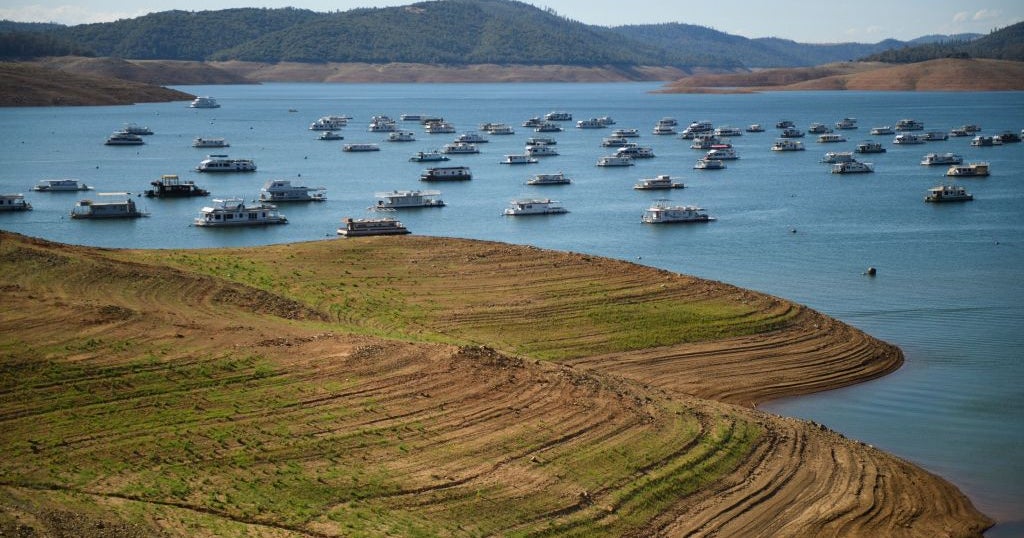OROVILLE, Calif. — Each year, Lake Oroville helps water a quarter of the nation’s crops, sustain endangered salmon beneath its massive earthen dam, and anchor the tourism economy of a Northern California county that must rebuild seemingly every year after unrelenting wildfires. But now the mighty lake — a linchpin in a system of aqueducts and reservoirs in the arid U.S. West that makes California possible — is shrinking with surprising speed amid a severe drought, with state officials predicting it will reach a record low later this summer.
While droughts are common in California, this year’s is much hotter and drier than others, evaporating water more quickly from the reservoirs and the sparse Sierra Nevada snowpack that feeds them. According to Jay Lund, co-director of the Center for Watershed Sciences at the University of California-Davis, the state’s more than 1,500 reservoirs are 50% lower than they should be this time of year. Over Memorial Day weekend, dozens of houseboats sat on cinderblocks at Lake Oroville because there wasn’t enough water to hold them. Blackened trees lined the reservoir’s steep, parched banks.
In nearby Folsom Lake, normally bustling boat docks rested on dry land, their buoys warning phantom boats to slow down. Campers occupied dusty riverbanks farther north at Shasta Lake. But the impacts of dwindling reservoirs go beyond luxury yachts and weekend anglers. Salmon need cold water from the bottom of the pools to spawn. The San Francisco Bay needs fresh reservoir water to keep out the saltwater that harms freshwater fish. Farmers need the water to irrigate their crops. Businesses need pools full so people will play in them and spend money.
And everyone needs the water to run hydroelectric power plants that supply much of the state’s energy. In Northern California’s Butte County, low water prompts another emotion: fear. If Lake Oroville falls below 640 feet (195 meters) — which it could do by late August — state officials will shut down a central power plant for just the second time ever because of low water levels, straining the electrical grid during the peak demand of the hottest part of the summer.
The county suffered the deadliest U.S. wildfire in a century in 2018 when 85 people died. Last year, another 16 people were killed in a wildfire. Walking along the Bidwell Canyon trail last week, 63-year-old Lisa Larson was supposed to have a good lake view. Instead, she saw withered grass and trees. “It makes me feel a little unsettled because the drier it gets, the more fires we will have. It makes me feel like our planet is drying up,” she said. Droughts are a part of life in California, where a Mediterranean-style climate means the summers are always dry and the winters are not always wet. The state’s reservoirs act as savings accounts, storing water in the wet years to help the state survive during the dry ones.
Temperatures hit triple digits in much of California over the Memorial Day weekend, earlier than expected. Last year was the third driest year on record in terms of precipitation. State officials were surprised earlier this year when about 500,000-acre-feet (61,674 hectare meters) of water they hoped to flow into reservoirs never showed up. One acre-foot is enough water to supply up to two households for one year.
